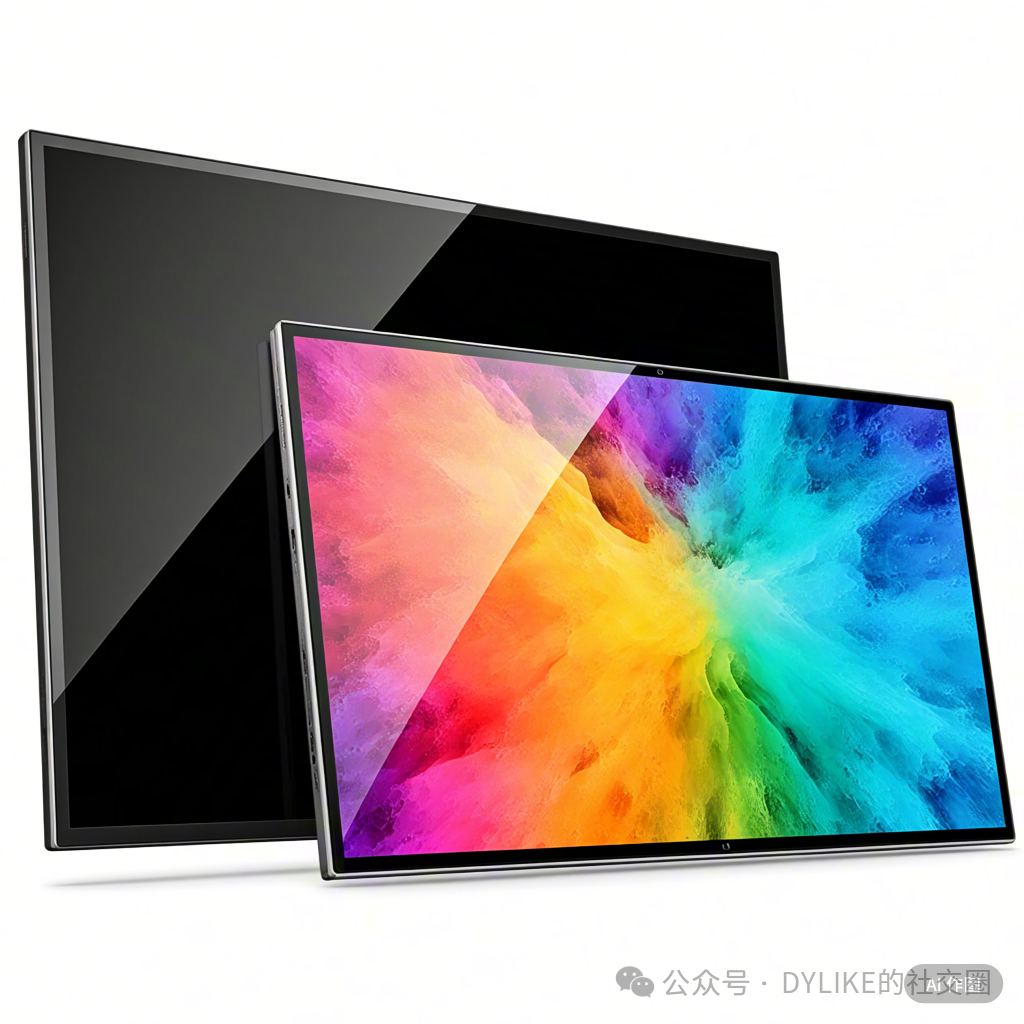 In the digital age, screens have become an extension of human senses. As we gaze at the two mainstream display technologies, OLED and LCD, the debate of “which is more straining on the eyes” has never ceased. The answer is not black and white, but hidden within the wavelengths of light, the rhythm of modulation, and the interplay between humanity and technology.
In the digital age, screens have become an extension of human senses. As we gaze at the two mainstream display technologies, OLED and LCD, the debate of “which is more straining on the eyes” has never ceased. The answer is not black and white, but hidden within the wavelengths of light, the rhythm of modulation, and the interplay between humanity and technology.
1. The Blue Light Controversy: A Battle of Energy and Penetration
All screens are difficult to escape from the original sin of blue light. Shortwave blue light (400-500 nm) has high energy and strong penetration, and long-term exposure may lead to risks such as retinal damage and macular degeneration.
-
LCD screens emit blue light from the white LED backlight, which has a higher proportion of blue light in its spectrum and cannot individually adjust the brightness of each pixel, resulting in more concentrated blue light output.
-
OLED screens can reduce the total amount of blue light by controlling the brightness of pixel points due to their self-emissive characteristics. Especially when displaying dark images, the non-emitting areas do not produce blue light, resulting in overall lower blue light intensity.
The contradiction: Although OLED has less blue light, its self-emissive principle causes light to directly hit the eyes, akin to “looking directly at a light bulb”; while LCD, through the refraction of the backlight layer and optical filters, produces softer light, similar to “viewing fire through gauze”.
2. Flicker Issues: The Curse of Alternating Light and Darkness
The method of adjusting screen brightness determines whether the human eye falls into the fatigue vortex of flicker.
-
LCD screens mostly use DC dimming to adjust the backlight current for brightness changes, resulting in almost no flicker and minimal eye strain.
-
OLED screens rely on PWM dimming (low-frequency pulse width modulation) to simulate brightness changes by rapidly switching pixel points on and off. At low brightness, the flicker frequency can drop below 200Hz, which, although invisible to the naked eye, can lead to eye fatigue and headaches due to neural perception.
Experimental data: Studies have shown that when the brightness of OLED screens is below 50%, the flicker issue significantly worsens, while LCD performs more stably under the same conditions.
3. Environment and Habits: The Overlooked “Third Variable”
The impact of screens on the eyes is not merely a comparison of technical parameters; usage scenarios and personal habits are the key variables.
-
High brightness environments: OLED, with its high contrast and wide color gamut, is clearer in sunlight but requires increased brightness, which may exacerbate flicker issues.
-
Low light environments: LCD is more suitable for long reading sessions due to better backlight uniformity; while OLED’s local highlights and flicker may cause faster eye fatigue.
-
Burn-in and lifespan: The organic materials in OLED are prone to aging, and long-term display of static images may cause “burn-in”, forcing users to frequently interact with the screen, indirectly increasing eye strain.
4. Philosophical Reflection on Technology and Humanity
The eye protection debate between OLED and LCD is essentially a trade-off between efficiency and health. Manufacturers pursue thinner, more vibrant, and energy-efficient screens, while users yearn for a “non-straining” perfect panel. This contradiction reflects a common dilemma in modern society:Does technological advancement always come at the cost of humanity?
Perhaps the real answer lies not in the technology itself, but in how we coexist with it.Lowering screen brightness, enabling eye protection mode, and taking regular breaks—these seemingly simple measures are, in fact, humanity’s small resistance to safeguard itself amidst the digital tide.
Conclusion: There is no perfect screen, only wiser choices
Both OLED and LCD have their pros and cons; the core of eye protection lies in scientific usage. If you pursue color and energy efficiency, OLED should be paired with ambient light and moderate brightness; if you value durability and stability, LCD may be the more reliable choice. Screens are windows, but also mirrors—through them, we see not only pixels but also a reverence for our health and the wisdom of balance.